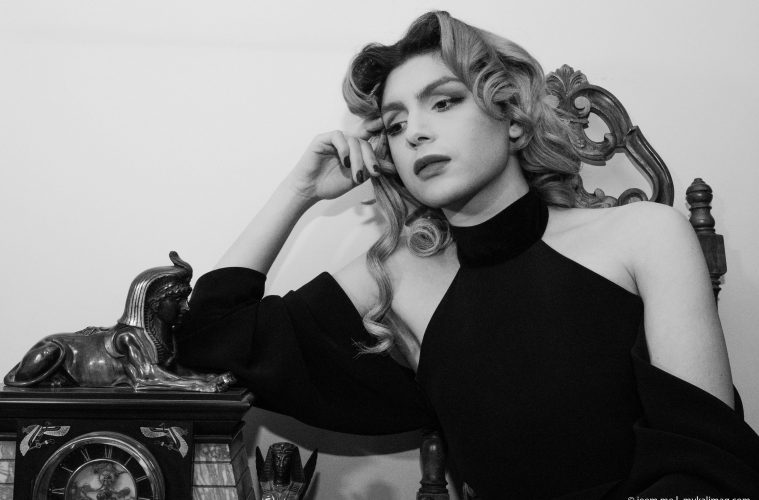Written By: Firas Hamdan
Translated by: Moosa Al Lawati
Copy Editor: Eliza Marks
Photography: Omar Sha3
Model: Aphrodite Nicole Smith
Styling: Fadi Zumot
Make-up: Ghadeer Bandak
Hairstyle: Hiba Salon Frank Provost – Amman
Creative Director: Khaled Abdel Hadi
Special Thanks to Alaa Abu Qasha for his assistance during photography
Complete issue references: Here
This project is a collaboration between My Kali and Jeem.me
Sabah expressed her patriotism when she sang “ya rab etshatti ya rab shi dazzina tnashar shab” (O Lord may it rain, Oh Lord a dozen men) in 1964, confessing her desire to marry a dozen men, each of whom represented a city or village in Lebanon. She expressed her patriotism through charm and love, qualities of the personal philosophy she considered the elixir of life.
Sabah used her innocent spontaneity in her patriotic rhetoric, calling for the unity of Lebanon through speaking through her own desires. Sabah was often regarded as feigning adolescence, ringed by tales of love, marriage, and men crossing her path and heart, and at the same time, avoided normative stereotype of the nation that often characterizes patriotism, that were often authoritarian or patriarchal in nature. She did not even entertain the typical symbols, such as the Lebanese army, but instead used her own lifestyle as an alternative model of expression.
I remember my enthusiasm when I first saw Sabah in person in Lebanon. I wasn’t even six years old when I screamed, “Shams, Mama, Shams!” Sabah was walking downstairs into the restaurant in Mount Lebanon, as far as I remember, supported by an attractive athletic young man with a distinctive chin. I asked my mother who that man was, and she mockingly responded, “This is her husband, Fadi Lubnan.” I eagerly ran toward Sabah, mimicking her signature finger movements, while singing “Ya Dalaá” (O’ Fondness). Sabah laughed when she saw me, and giggled when I told her that I wanted to grow up to dance with her on stage like her husband Fadi does. She kissed me and said “Oh my, You’re so wonderful! Yalla I’m waiting for you in fifteen years time!”
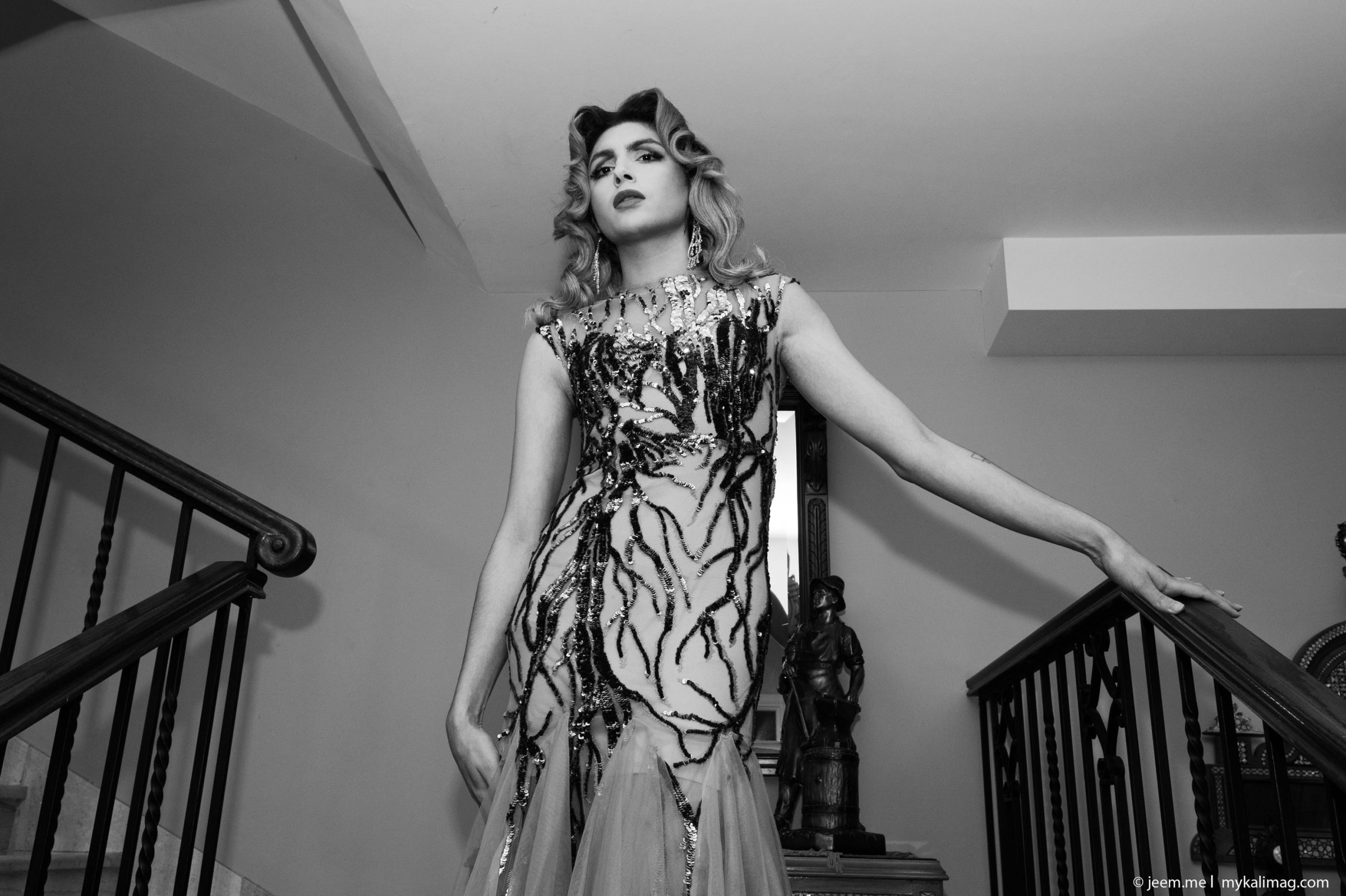
Featured image: Black top – Nafsika Skourti. This image: Dress and Earrings – STylist’s own.
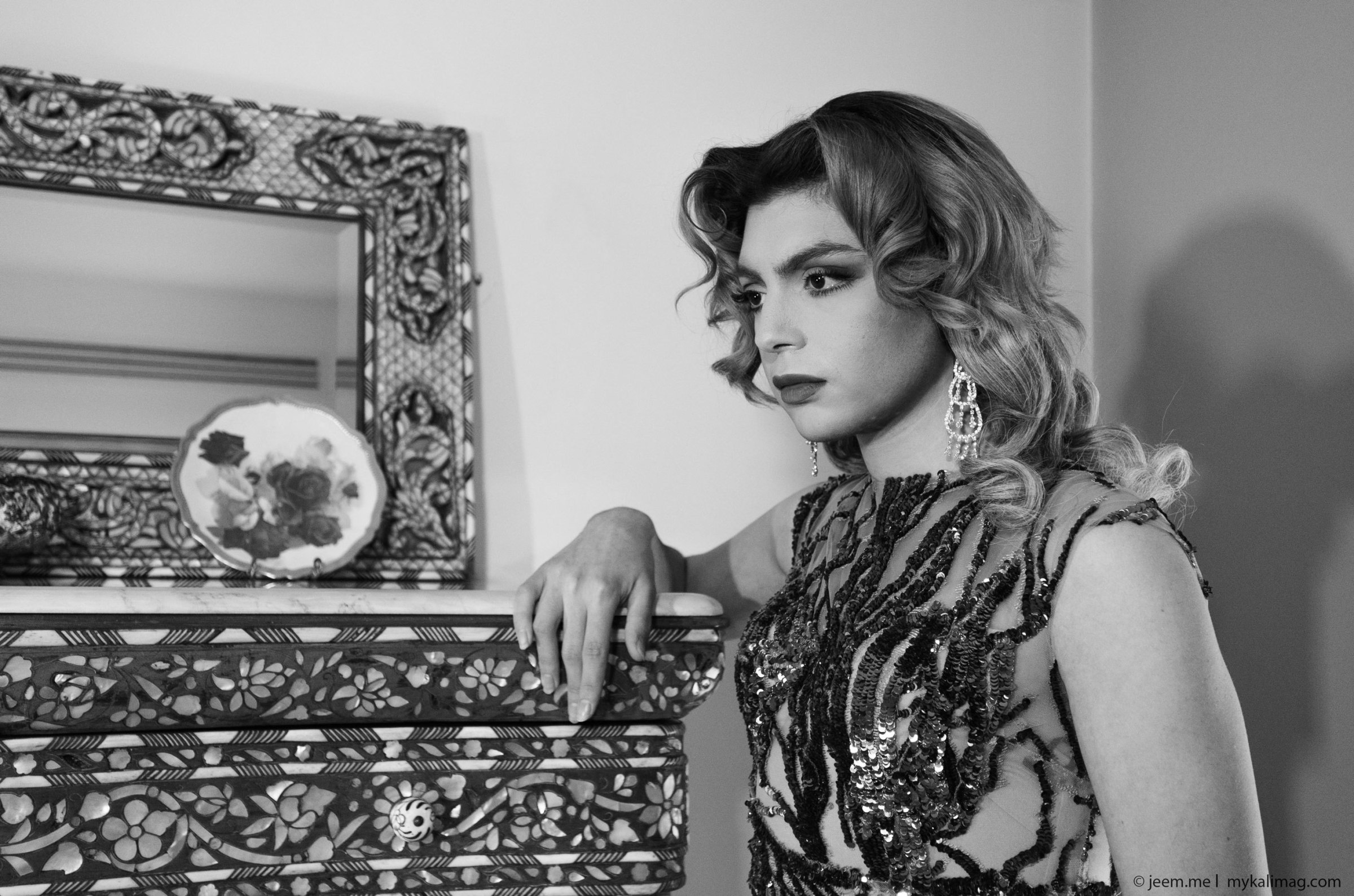
Dress and Earrings – STylist’s own.
I returned to our dinner table while still staring at her from across the room. I didn’t quite understand what the women of my family’s peeks and whispers on Fadi and Sabah were all about. It was all mixed with their laughter and the chimes of cutlery, and felt like a vivid scene from a movie I recall. Sabah sat there, indulging in laughter with her husband and friends whilst other patrons gazed upon her and murmured their judgements about her outrageous choices to one another. Sabah “Al Mutaṣabiyah,” which most closely translates to “she who is trying to be young” and holds a negative connotation. This wasn’t exclusively my family’s label of choice, but the social collective’s, including those who interviewed her without attempting to give her the benefit of the doubt regarding her philosophy on ageing, which countered the norms in its continued embrace of youth and romance.
She was a diva who would recount stories about her children and grandchildren in interviews while dressed bolder than she did in her youth.
According to Lisan Al Arab, a major dictionary of the Arabic language, “mutaṣabiyah” (feminine of mutaṣabi) comes from “ṣiba”; the act of “ṣubuwwah”; which means playful flirtatiousness. And according to Al Mu’jam Al Waseet, a more contemporary dictionary, it means yearning nostalgia. Although “mutasabiyah” was used in this article to convey the stigmatic understanding of the word within the Arab society, “mutaṣabiyah” linguistically describes a condition that has nothing to do with age. Instead, Sabah’s biography provides that her “ṣubuwwah” was a vivid challenge against the stereotypical correlation between social norms and ageing. She identified and lived by her very own and explicit love story in defiance of this stereotype. The stigmatic label “mutaṣabiyah” is thus not only literally wrong, but also confines expressions of love to a certain age group, something which undoubtedly reflects a patriarchal understanding of age and love.
Sabah was largely independent from the social indicators generally attached to time or hours. She defined her “age” smartly, erratically, and dynamically without falling into the trap of age-wise expectations, particularly those of powerlessness and fatigue. Even her laughter would overshadow the wrinkles that appeared on her face. She was a diva who would recount stories about her children and grandchildren in interviews while dressed bolder than she did in her youth. She would tell tales of her relationships with men, each chapter distinct, and each rooted in her agility and strength. She proved that even as a 70 year old, she was truer to her belief than she was to her age.
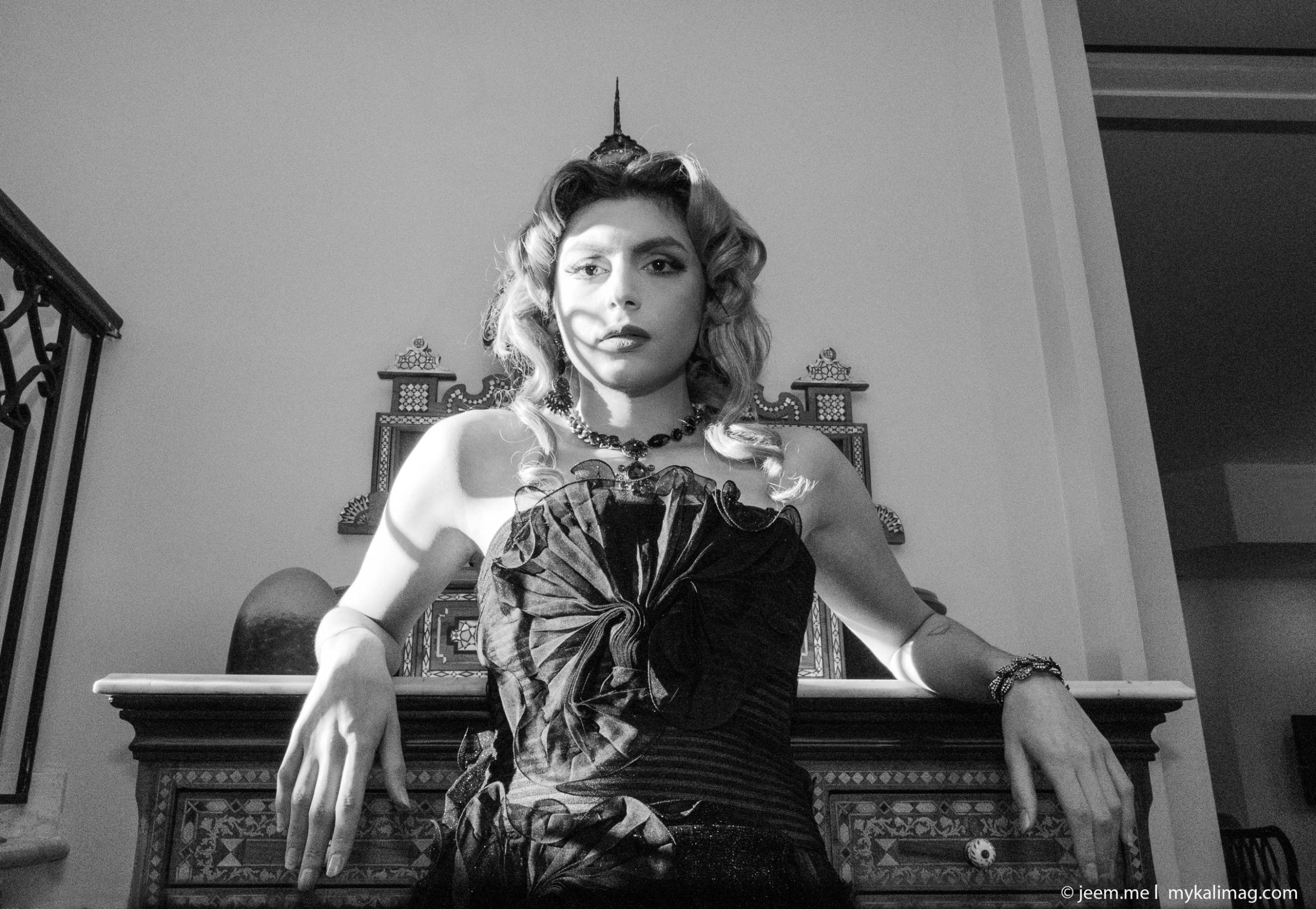
Dress – BCBG; Earrings, Necklace and bracelet – BCBG.
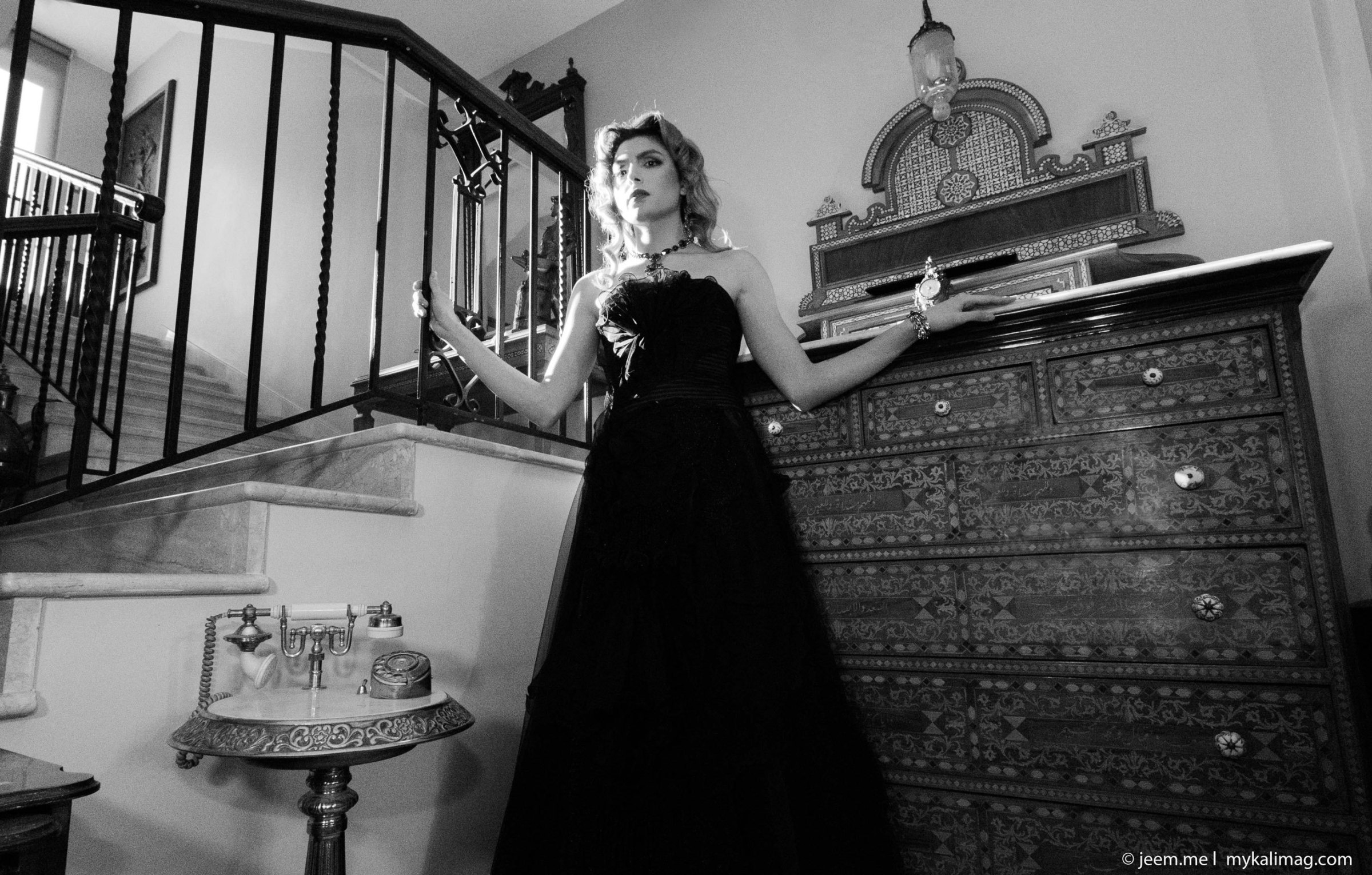
Dress – BCBG; Earrings, Necklace and bracelet – BCBG.
Despite all this, Sabah sought marriage as a way to love without limitations while also maneuvering within conduct considered socially adequate, confronting the authority that legislates and binds love contracts. In her song “Eidak Anni Ew’a” (Hands off me, beware) from the movie Eidak An Mrati (Hands off my, woman), Sabah teased Rushdy Abaza in a gesture of her feelings for him prior to their marriage. And even after their divorce, whilst he was married to Samia Gamal, she stole kisses from him in her song “Ya Ragil Ya Tayyib” (O’ kind man) from the movie, Nar Al Showq (Flame of Longing), in remembrance of their past. She used marriage as an adaptive tool to pass her love affairs by the social radar. Perhaps they were short and pleasurable for the two parties, or perhaps they served her own good. It is said that Sabah married Rushy to spite all women, although I am not as concerned by her motives here as I am by her legend. Her famous remark, “If you haven’t married Rushdy, you haven’t married yet,” goes to show that even one’s libido can benefit from loopholes within an authoritarian society and defy its fragile limitations.
The older she grew, the more she resorted to art as a means of expressing her love for life. This was all despite the cues that often forced women to succumb to what’s always been expected out of “women of her age”: they are to be chaste and abstinent at home and hidden from the public eye, as if a woman’s life was supposed to end in her 60s. These are, of course, an extension of consumerism and standards of production within the capitalist realm that sentences people to retirement. Yet none of this was able to prevent Sabah from practicing her art or living her own philosophy.
Sabah’s conceptualisation of marriage continued evolving to serve the changing dynamics of her relationships. Her boldest partnership was perhaps that with Fadi Lubnan, who was 40 years her junior. Their partnership was romantic but also took on a professional side. This may have led to some exploitation, but, as Sabah described, she needed someone who wouldn’t just snore at night nor ask for what she couldn’t provide. Marriage was thus restructured from mere tool for social acceptance into an institution of mutual interest; she supported Fadi Lubnan’s rise to fame while he supported Sabah’s health and artwork. They danced together for many years, and she leaned into his arm every time they exited the stage.
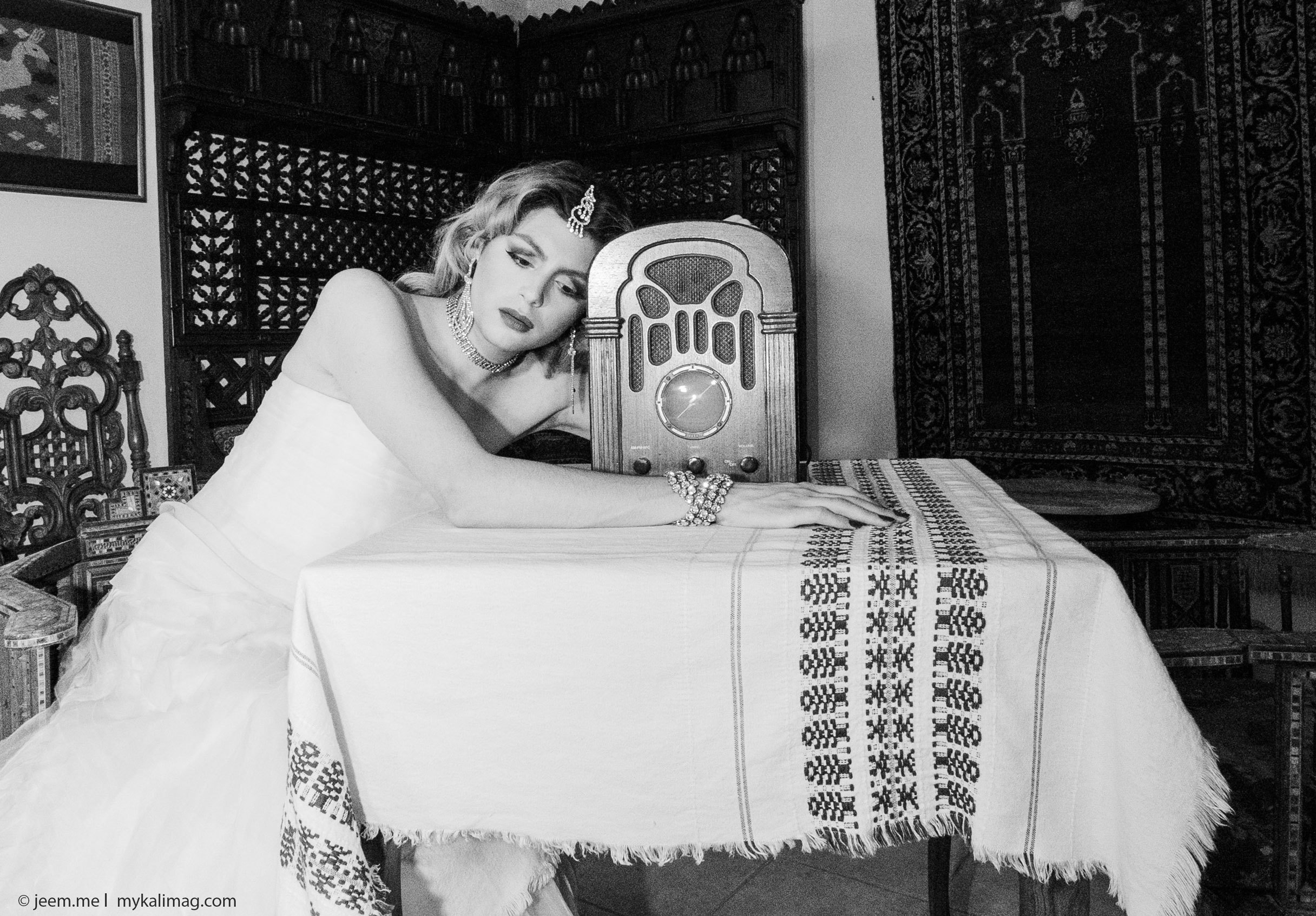
Dress – BCBG; Earrings, headpiece and choker – Stylist’s own; Necklace (worn as Bracelet); Nafsika Skourti.
Sabah pushed her philosophy of life and love to even defying the sanctity of grief, willing to have it to be carried out even at her funeral. Masses of dancing crowds bid her farewell as her coffin was carried, as if she were being carried to her last and grandest show. The performance was daring, and directed by and starring the one and only Sabah, the scene artist who turned the hearts of those who once mocked her age and rumoured her death into followers of her ways.
More than just an entertainer, Sabah was an actualisation of an existential philosophy. She declared her feelings, invited us into intimate details of her life, and smudged the socially-constructed lines that divide the private and concealed from the public and common. Her song, “Sa’at Sa’at” (Time after Time), unleashed her true and opposing feelings, perhaps confessing the main inspiration behind all her artwork: her sadness. In “Hours, Hours,” she dismantled the everyday image of that shiny, smiley and blonde performer, exposing the deeper Sabah who screamed in thundering declaration that sometimes time feels heavy. “The steps of time are hefty, the hourly ticks are hefty, time after time.”

